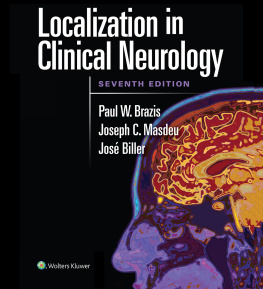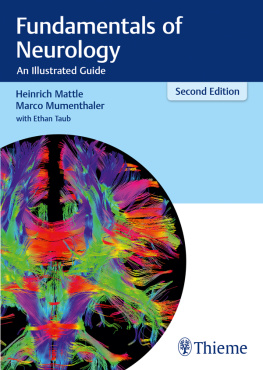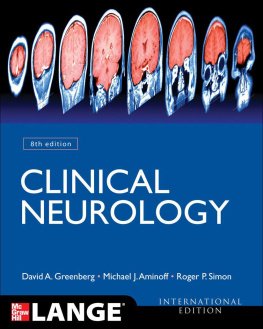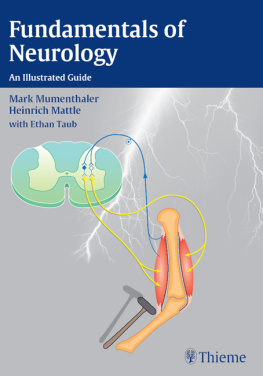
Acquisitions Editor: Jamie Elfrank
Product Development Editor: Andrea Vosburgh
Senior Production Project Manager: Alicia Jackson
Design Coordinator: Stephen Druding
Illustration Coordinator: Jennifer Clements
Manufacturing Coordinator: Beth Welsh
Marketing Manager: Rachel Mante Leung
Prepress Vendor: Aptara, Inc.
7th edition
Copyright 2017 Wolters Kluwer
Copyright 2011 Lippincott Williams & Wilkins, a Wolters Kluwer business. All rights reserved. This book is protected by copyright. No part of this book may be reproduced or transmitted in any form or by any means, including as photocopies or scanned-in or other electronic copies, or utilized by any information storage and retrieval system without written permission from the copyright owner, except for brief quotations embodied in critical articles and reviews. Materials appearing in this book prepared by individuals as part of their official duties as U.S. government employees are not covered by the above-mentioned copyright. To request permission, please contact Wolters Kluwer at Two Commerce Square, 2001 Market Street, Philadelphia, PA 19103, via email at (products and services).
9 8 7 6 5 4 3 2 1
Printed in China
Library of Congress Cataloging-in-Publication Data
Names: Brazis, Paul W., author. | Masdeu, Joseph C., author. | Biller, Jos, author.Title: Localization in clinical neurology / Paul W. Brazis, Joseph C. Masdeu, Jos Biller.Description: Seventh edition. | Philadelphia : Wolters Kluwer, [2017] | Includes bibliographical references and index.Identifiers: LCCN 2016015378 | ISBN 9781496319128Subjects: | MESH: Nervous System Diseasesdiagnosis | Diagnostic Techniques, NeurologicalClassification: LCC RC348 | NLM WL 141 | DDC 616.8/0475dc23LC record available at https://lccn.loc.gov/2016015378
This work is provided as is, and the publisher disclaims any and all warranties, express or implied, including any warranties as to accuracy, comprehensiveness, or currency of the content of this work.
This work is no substitute for individual patient assessment based upon healthcare professionals examination of each patient and consideration of, among other things, age, weight, gender, current or prior medical conditions, medication history, laboratory data and other factors unique to the patient. The publisher does not provide medical advice or guidance and this work is merely a reference tool. Healthcare professionals, and not the publisher, are solely responsible for the use of this work including all medical judgments and for any resulting diagnosis and treatments.
Given continuous, rapid advances in medical science and health information, independent professional verification of medical diagnoses, indications, appropriate pharmaceutical selections and dosages, and treatment options should be made and healthcare professionals should consult a variety of sources. When prescribing medication, healthcare professionals are advised to consult the product information sheet (the manufacturers package insert) accompanying each drug to verify, among other things, conditions of use, warnings and side effects and identify any changes in dosage schedule or contraindications, particularly if the medication to be administered is new, infrequently used or has a narrow therapeutic range. To the maximum extent permitted under applicable law, no responsibility is assumed by the publisher for any injury and/or damage to persons or property, as a matter of products liability, negligence law or otherwise, or from any reference to or use by any person of this work.
LWW.com
This volume is dedicated to all neurology residents/fellows/future colleagues.
Preface
The new edition of Localization in Clinical Neurology is again directed at frontline clinicians caring for patients with neurologic disease processes who are confronted with the Where is it? of neurologic disorders. Much new material has been added reflecting multiple additions to the neurologic literature concerning neuroanatomy and principles of neurologic localization. There is still no substitute for an accurate neurologic history and examination to focalize appropriate neuroimaging and electrophysiologic studies to diagnose neurologic problems.
Dr. Brazis would like to express his appreciation to his colleagues at the Mayo Clinics in Jacksonville, Scottsdale, and Rochester and expresses his gratitude and admiration for his teachers and friends: Drs. Neil Miller, Andrew G. Lee, Eric R. Eggenberger, Frank A. Rubino, Sudhansu Chokroverty, Jonathan D. Trobe, James J. Corbett, Daniel Broderick, James Bolling, and Michael Stewart.
Dr. Masdeu thanks his family and all his colleagues at the Houston Methodist Neurological and Research Institutes and at the NIH Intramural Research Program.
Dr. Biller would like to express his gratitude to his family for their encouragement and to his patients for all they have taught him during his ongoing journey as a neurologist.
Paul W. Brazis
Joseph C. Masdeu
Jos Biller
General Principles of Neurologic Localization
Page 1 Introduction
Fittingly, a book on localization in clinical neurology should begin with a chapter explaining what the term localization means. Localization derives from the Latin term locus or site. Localization is the diagnostic exercise of determining from the signs (most often) or symptoms of the patient what site of the nervous system has been affected by a disease process. Important injury to the nervous system results in abnormal function, be it behavioral, motor, or sensory. Characteristics of the dysfunction often pave the way for a topographic (from the Greek term topos or place) diagnosis. Localization and topographic diagnosis refer to the same thing: the determination of where in the nervous system the damage has occurred.
Even in the age of sophisticated neurophysiology, structural and functional neuroimaging, and molecular biology, the clinical diagnosis should precede the use of these other techniques if their full diagnostic potential is to be realized. Clinical localization has particular relevance to the adequate use of ancillary procedures. For instance, false-positive findings from gunshot approach neuroimaging can only be avoided by careful localization. As an example, congenital brain cysts, strikingly visible on imaging procedures, are often wrongly blamed for a variety of neurologic disorders, while the actual disease remains overlooked and untreated. The thoughtful use of ancillary procedures in neurology, guided by clinical localization, minimizes discomfort for patients and the waste of resources.
A Brief History of Localization: Aphasia as an Example
The history of localization is the history of early neurology, concerned with topographic diagnosis that would eventually lead to therapy. In few areas of neurology was the development of localization as interesting and so much at the center of famous controversies as it was in the case of aphasia. In fact, the oldest known document on neurologic localization concerns aphasia. It was recorded in an Egyptian papyrus from the Age of the Pyramids (about 30002500 bc), where an Egyptian surgeon described the behavior of an aphasic individual:
If thou examinest a man having a wound in his temple, penetrating to the bone, (and) perforating his temporal bone; if thou ask of him concerning his malady and he speak not to thee; while copious tears fall from both his eyes, so that he thrusts his hand often to his face so that he may wipe both his eyes with the back of his hand Edwin Smith surgical papyrus, Case 20, 2800 bc [].
Next page









